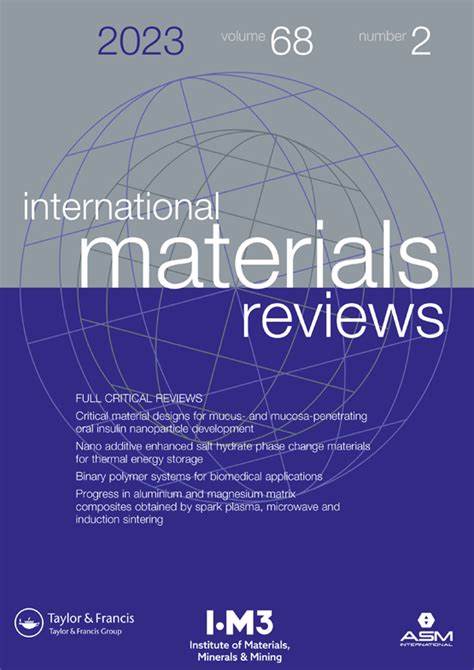A progress report on the MAB phases: atomically laminated, ternary transition metal borides
IF 15.5
1区 材料科学
Q1 MATERIALS SCIENCE, MULTIDISCIPLINARY
引用次数: 117
Abstract
ABSTRACT The MAB phases are atomically layered, ternary or quaternary transition metal (M) borides (TMBs), with the general formula (MB)2zAx(MB2)y (z = 1–2; x = 1–2; y = 0–2), whose structures are composed of a transition M-B sublattices interleaved by A-atom (A = Al,Zn) mono- or bilayers. Most of the MAB phases were discovered before the 1990s, but recent discoveries of intriguing magnetocaloric properties, mechanical deformation behaviour, catalytic properties, and high-temperature oxidation resistance has led to their ‘re-discovery’. Herein, MAB phase synthesis is reviewed and their magnetic, electronic, thermal, and mechanical properties are summarized. Because the M-B layers in the MAB phases structurally resemble their corresponding binaries of the same M:B stoichiometry, the effects of the A-layers on properties are discussed. Inconsistencies in the literature are critically assessed to gain insights on the processing-structure-property relations, suggest fruitful avenues for future research, and identify limitations for prospective applications.MAB相的进展报告:原子层合的三元过渡金属硼化物
MAB相是原子层状的三元或四元过渡金属(M)硼化物(TMBs),其通式为(MB)2zAx(MB2)y (z = 1-2;x = 1-2;y = 0-2),其结构由a原子(a = Al,Zn)单层或双层交错的过渡M-B亚晶格组成。大多数MAB相是在20世纪90年代之前发现的,但最近发现的有趣的磁热学性质、机械变形行为、催化性质和高温抗氧化性导致了它们的“重新发现”。本文综述了MAB相的合成方法,综述了MAB相的磁性、电子学、热学和力学性能。由于MAB相中的M-B层在结构上与相同M:B化学计量的对应二元结构相似,因此讨论了a层对性能的影响。对文献中的不一致性进行批判性评估,以获得对处理-结构-属性关系的见解,为未来的研究提出富有成效的途径,并确定潜在应用的局限性。
本文章由计算机程序翻译,如有差异,请以英文原文为准。
求助全文
约1分钟内获得全文
求助全文
来源期刊

International Materials Reviews
工程技术-材料科学:综合
CiteScore
28.50
自引率
0.00%
发文量
21
审稿时长
6 months
期刊介绍:
International Materials Reviews (IMR) is a comprehensive publication that provides in-depth coverage of the current state and advancements in various materials technologies. With contributions from internationally respected experts, IMR offers a thorough analysis of the subject matter. It undergoes rigorous evaluation by committees in the United States and United Kingdom for ensuring the highest quality of content.
Published by Sage on behalf of ASM International and the Institute of Materials, Minerals and Mining (UK), IMR is a valuable resource for professionals in the field. It is available online through Sage's platform, facilitating convenient access to its wealth of information.
Jointly produced by ASM International and the Institute of Materials, Minerals and Mining (UK), IMR focuses on technologies that impact industries dealing with metals, structural ceramics, composite materials, and electronic materials. Its coverage spans from practical applications to theoretical and practical aspects of material extraction, production, fabrication, properties, and behavior.
 求助内容:
求助内容: 应助结果提醒方式:
应助结果提醒方式:


